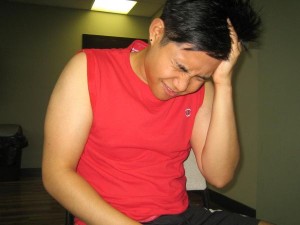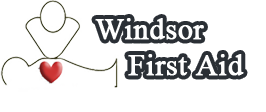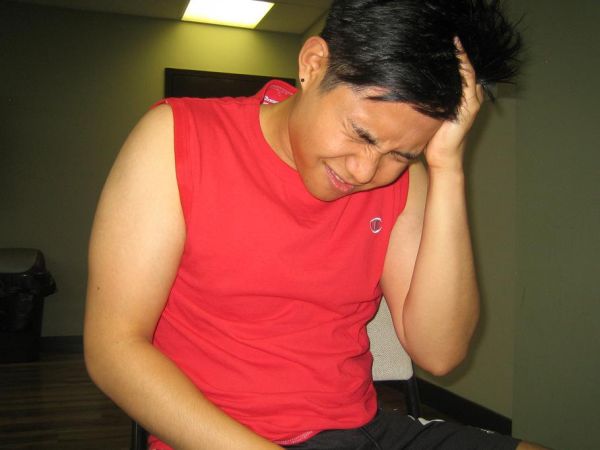A migraine headache is a severe persistent or recurrent headache that lasts for

several hours, usually more than four hours in a person. The exact cause is still not known, however, 6% of males and 18% of females suffer from migraine headaches.
Commonly over-the-counter medications are used to treat migraine headaches.
Important Disclaimer: This post on Migraine Headaches is for information purposes only. To learn to recognize and manage these and other minor and major first aid emergencies enrol in workplace approved first aid training (sign up here).
Risk factors
The following are the risk factors associated with migraine headaches:
- Alcohol consumption
- Age group of 45-65
- A family history of migraines
- Usage of birth control pills
- Smoking
- Taking medications that may trigger migraines
- Stress
- The female gender
Cause
The exact cause of migraine headaches is still not known but experts believe that one’s genetics may play an important role in increasing a person’s risk of developing migraines later in life. Many medical experts also believe that migraine headaches may be caused due to the malfunctioning of one major nerve in the head, namely the trigeminal nerve and an abnormality in the balance of chemicals in the brain.
Signs and symptoms
Common signs and symptoms of migraine headaches include:
- Chronic headaches
- Nausea and vomiting
- Severe episodic headaches – pain in one side of the head
- Increased sensitivity to sound and loud noises
- Increased sensitivity to bright light or sunlight
- Changes in vision such as flashing lights upon the onset of the migraine headache or seeing floaters
Other symptoms and signs of migraine that are less common in people include:
- Dizziness
- Fatigue
- Difficulty speaking
- Muscle pain
- Difficulty sleeping or insomnia
- Numbness and tingling in the hands, arms, legs feet and face(bilateral)
- Drowsiness
- Pain in the scalp
The following are the rare symptoms of migraine headache:
- Sudden weakness of one leg or one arm – unilateral weakness of the arm, unilateral weakness of the hand, unilateral weakness of the left, unilateral weakness of an arm and leg
- Aphasia – difficulty understanding speech and/or difficulty speaking sentences coherently without mistake
- Facial changes and weakness (unilateral) – drooping face
- Localized numbness and tingling
Triggers
Common triggers that may be associated with migraine headaches include:
- Birth control pills
- Anxiety
- Food and certain drugs
- Hypoglycemia
- Changes in weather – increase in temperature r a drop in barometric pressure
- Menstruation
Drugs that may trigger migraine headaches are as follows:
- Asthma medication
- Diet pills
- Amphetamines
- Birth control pills
- Blood pressure medication
- Estrogen
- Nitrates
Foods that may trigger migraine headaches are as follows:
- Alcohol
- Aged cheese
- Beans
- Chocolate
- Caffeine
- Cured or salted meat
- Peanuts
- Certain food additives such as monosodium glutamate
- Tea and coffee
- Wine
- Sourdough bread
Treatment
Follow these home treatment steps if you are suffering from a migraine headache:
- Treat symptoms of migraine headache
- Rest in a cool, quiet and dark room
- Ask someone to apply an ice pack or cool compress on the painful region of your head
- Have someone massage your scalp
- To relieve pain, you may take over-the-counter pain killers such as acetaminophen or ibuprofen. Avoid giving aspirin to children and teenagers under 18 years of age
When to seek medical attention
- If pain is persistent or recurrent
- If headache is accompanied with a stiff neck, numbness, tingling or weakness of the limbs, vomiting, and difficulty speaking

